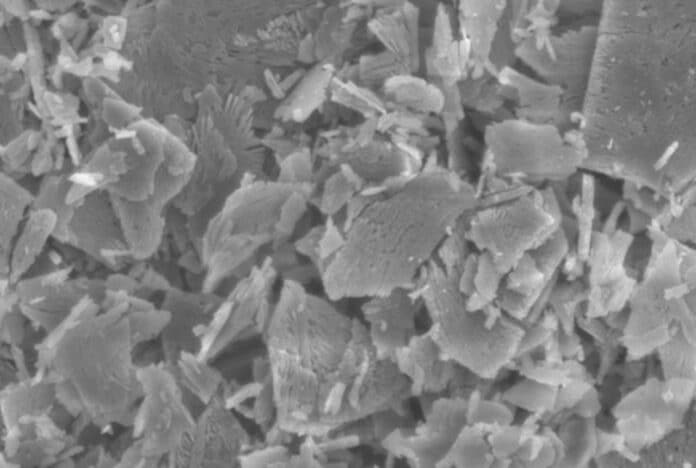Researchers at University of São Paulo in Brazil have created a new material that helps bone cells grow faster. This material, cobalt-doped monetite, can be used in bone healing, bone grafts, and dental implant recovery. The scientists modified monetite, a calcium phosphate compound similar to human bone, by adding cobalt.
Cobalt is essential for the growth of bone cells, and the researchers believe this innovation could have various medical applications, such as prostheses and injectable bone cement coatings. This study was reported in the Journal of Biomedical Materials Research.
Biochemist Willian Fernando Zambuzzi, a professor at IBB-UNESP and the last author of the article, told Agência FAPESP, “For the first time, our data produced sufficient evidence based on hypoxia [low levels of oxygen in tissue] that we may have a novel biomimetic material with the potential to regenerate bone tissue. The quantity and quality of autogenous bone available from the patient are not always sufficient for clinical grafting purposes.”
Current grafting procedures for patients with fractures, tumors, or dental prostheses often involve using bone fragments from the patients themselves. However, this requires additional surgery, comes with infection risks, and extends recovery time. Zambuzzi, who has been researching bone biology with support from FAPESP since the early 2000s, is working to find better solutions. He and his team focus on understanding the molecules and mechanisms involved in bone development and seek compatible biomaterials.
As life expectancy increases globally, there’s a growing need for improved bone regeneration and therapies. The goal is to speed up patient recovery, reduce hospital stays, lower treatment costs, and minimize side effects by developing biomaterials that mimic bone structure’s complexity while ensuring safety and efficacy.
In 2014, an article in Nature revealed that cells lining blood vessels could boost the development of bone cells, and there was a connection between blood vessel growth and bone formation. Inspired by this, Zambuzzi started his research at the Laboratory for Bioassays and Cell Dynamics, supported by FAPESP’s Young Investigator Grant.
He aimed to find molecules encouraging blood vessel growth, indirectly affecting bone cell development. Eventually, he zeroed in on cobalt chloride, known to induce Hypoxia, prompting the body to increase blood vessels to compensate for the lack of oxygen.
Zambuzzi said, “Hypoxia occurs naturally in tissue. Having explored its development and the links between endothelial cells and osteoblasts, we investigated biomimetic aspects. We decided on the artificial provocation of a novel molecule, cobalt-doped monetite, to stimulate bone production as a complementary effect to intensifying angiogenesis [creation of new blood vessels].”
The new material passed cytotoxicity tests, confirming its safety according to the leading standard for evaluating medical devices (ISO 10993:5). The research showed that the amount of cobalt is crucial in determining the ideal concentration for future use, especially in bone regeneration. With positive primary results, the researchers plan to conduct more complex analyses using preclinical models, including animal tests, to understand the material’s practical applications better.
The group follows the three Rs principles—reducing the number of animals used, replacing them when possible, and refining procedures to minimize discomfort. While they aim to adhere to strict ethical standards, some vertebrate physiology models may be necessary in certain stages of product development. The goal is to create biomimetic materials that enhance people’s lives while upholding ethical principles in animal testing.
The biomaterials developed at São Paulo State University, specifically cobalt-doped monetite, present a promising avenue for accelerating bone regeneration. The study’s findings open the door to innovative applications in orthopedics and dentistry, potentially improving patient outcomes and enhancing bone-related medical procedures’ efficiency. Further research and clinical trials are warranted to validate and translate these findings into practical medical applications.
Journal reference:
- Gerson Santos de Almeida, Marcel Rodrigues Ferreira, et al., Development of cobalt (Co)-doped monetites for bone regeneration. Journal of Biomedical Materials Research. DOI: 10.1002/jbm.b.35319.
